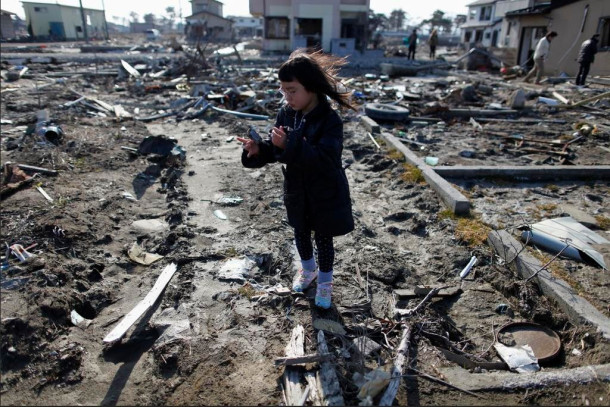
World conference adopts new international framework for disaster risk reduction after marathon negotiations
Representatives from 187 UN member States today adopted the first major agreement of the Post-2015 development agenda, a far reaching new framework for disaster risk reduction with seven targets and four priorities for action.
Conference President, Ms. Eriko Yamatani, Minister of State for Disaster Management, announced agreement on the text, the Sendai Framework for Disaster Risk Reduction 2015-2030 – the new international framework for disaster risk reduction, following a marathon final round of negotiations which went on for over 30 hours.
One of the milestones of these negotiations is the inclusion of disabled people for the Post 2015 Framework on Disaster Risk Reduction. For the first time, the Sendai Framework for Disaster Risk Reduction 2015-2030 recognizes that local authorities have a crucial role to play in disaster risk reduction
Margareta Wahlström, the Secretary-General’s Special Representative for Disaster Risk Reduction and the Head of the UN Office for Disaster Risk Reduction, said: “The adoption of this new framework for disaster risk reduction opens a major new chapter in sustainable development as it outlines clear targets and priorities for action which will lead to a substantial reduction of disaster risk and losses in lives, livelihoods and health. Wahlström also emphasized the essential role of local governments in DRR.
“Implementation of the Sendai Framework for Disaster Risk Reduction over the next 15 years will require strong commitment and political leadership and will be vital to the achievement of future agreements on sustainable development goals and climate later this year. As the UN Secretary-General said here on the opening day, sustainability starts in Sendai.”
The framework outlines seven global targets to be achieved over the next 15 years: a substantial reduction in global disaster mortality; a substantial reduction in numbers of affected people; a reduction in economic losses in relation to global GDP; substantial reduction in disaster damage to critical infrastructure and disruption of basic services, including health and education facilities; an increase in the number of countries with national and local disaster risk reduction strategies by 2020; enhanced international cooperation; and increased access to multi-hazard early warning systems and disaster risk information and assessments.
Conference Main Committee Co-Chair, Ambassador Päivi Kairamo from Finland, said: “Delegates have taken into account the experience gained through implementation of the current Hyogo Framework for Action. We have agreed on four priorities for action focussed on a better understanding of risk, strengthened disaster risk governance and more investment.
“A final priority calls for more effective disaster preparedness and embedding the ‘build back better’ principle into recovery, rehabilitation and reconstruction. These will be the four points of the DRR compass for the next 15 years.”
Local Authorities key role
During the conference, the Major Group of Local Authorities, led by the organizing partners UCLG and ICLEI, organized a Round table of local authorities and signed the Sendai Declaration of Local Authorities, to which METROPOLIS as the Metropolitan section of UCLG had an active role, one of the clear messages of the declaration is the need to connect the Sendai Framework for Action with the fight against poverty, the urban agenda, the fight against climate change, the clear need of education and the Post-2015 agenda.
For the first time, the Sendai Framework for Disaster Risk Reduction 2015-2030 recognizes that local authorities have a crucial role to play in disaster risk reduction. The local level and local authorities are mentioned many times in the final text.
The need to better connect the new agenda on resilience with the global urban agenda that is currently being defined (Habitat III) and the new development agenda (Post-2015 Sustainable Development Goals) was also raised. The success of local governments in Sendai should be seen in parallel with the work carried out within the framework of the Global Taskforce of Local and Regional Governments for Post-2015 Development Agenda towards Habitat III
The World Conference was attended by over 6,500 participants including 2,800 government representatives from 187 governments. The Public Forum had 143,000 visitors over the five days of the conference making it one of the largest UN gatherings ever held in Japan.
The WCDRR was for METROPOLIS the occasion to meet those member cities directly involved through its activities or policies in disaster risk reduction and resilience.
METROPOLIS took the opportunity to meet with a very active member in DRR, Mexico City, the city that leads the regional training center for America and offers in its schedule for 2015, training on disaster risk reduction, in addition to further topics. METROPOLIS participation in this event is aimed at strengthening its commitment and recognition of Disaster Risk Reduction as a part of the agenda of the association.
Sendai Framework for Action 2015-2030
Official Statement of Local and Regional Authorities Major Group
